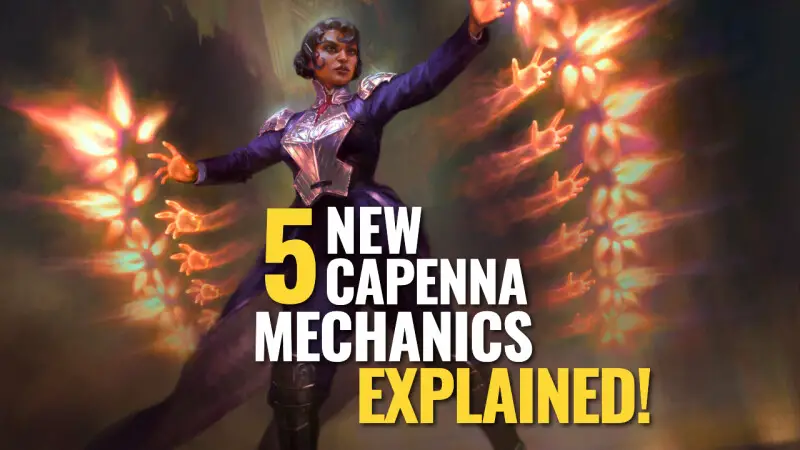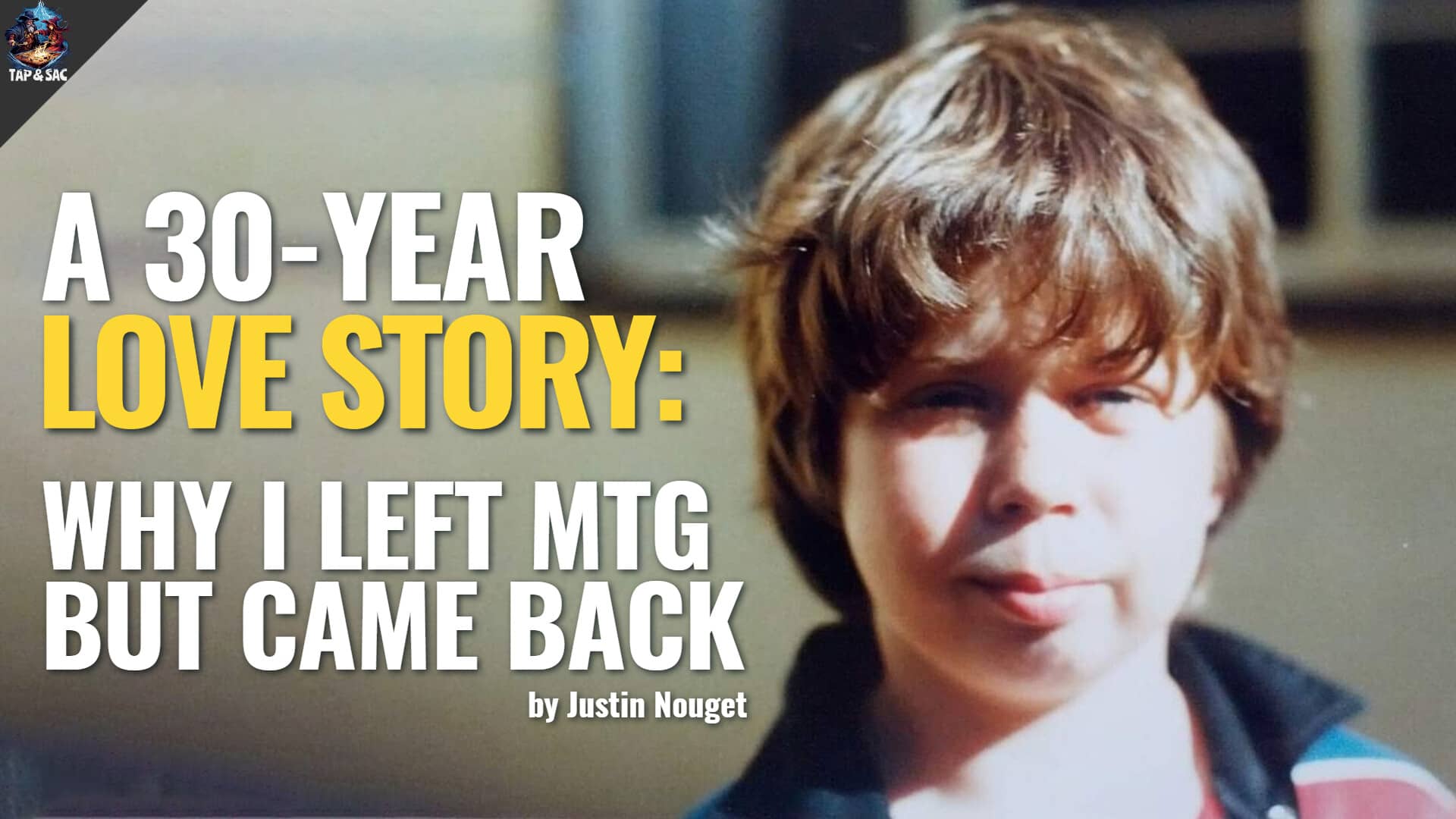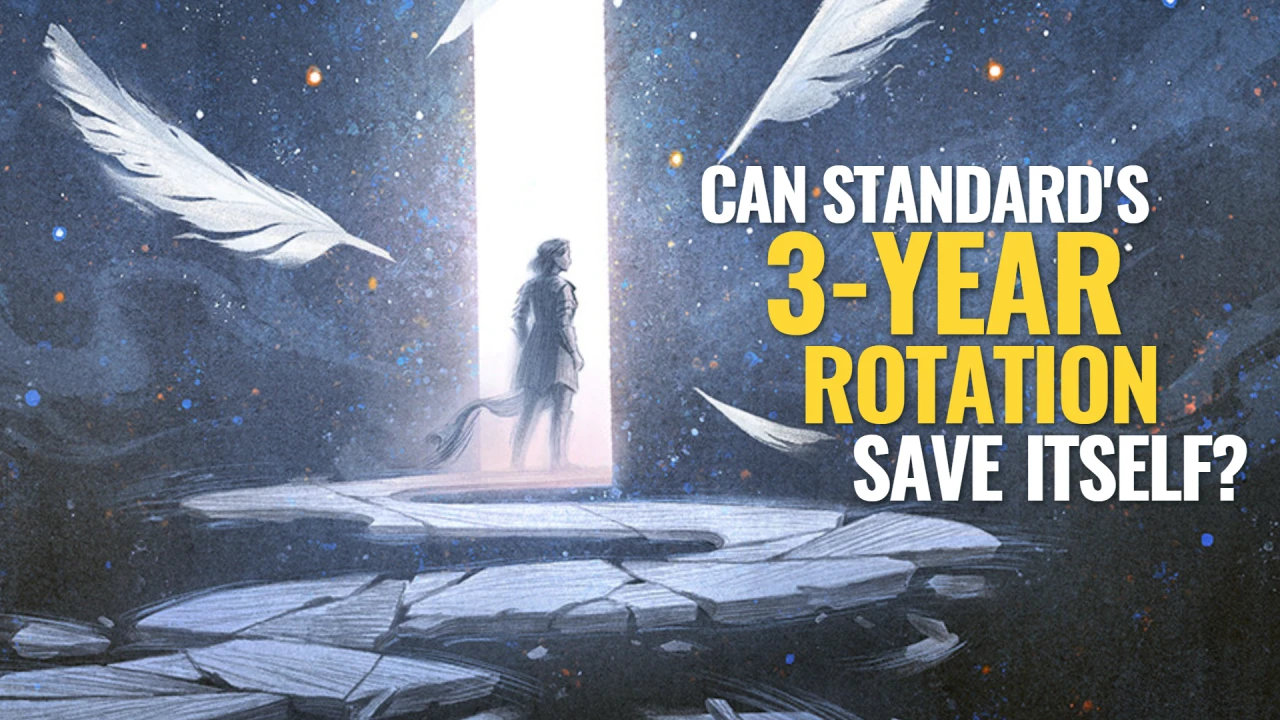Magic’s latest set – Streets of New Capenna – can feel a little intimidating, not just because players are transported to a brand new world of backstabbing deals and debauchery, but there are also multiple 3-colour synergies to contend with.
The set also introduces 5 new mechanics: Connive, Casualty, Blitz, Alliance, and Shield Counters, each tied to its own Capenna mafia family.





Here’s a quick summary of what each ability does:
Connive (Obscura family): Draw and discard a card. If a non-land card was discarded, add a +1/+1 counter to the Creature with Connive.
Casualty (Maestros family): When you cast a spell with Casualty, you may Sacrifice a Creature with power equal to the Casualty. If you do, copy that spell.
Blitz (Maestros family): If a Creature’s Blitz was activated, the Creature gains Haste but has to be sacrificed at the end step. When the Creature dies, draw a card.
Alliance (Cabaretti family): Whenever another Creature enters the Battlefield under your control, it triggers an effect.
Shield Counters (Brokers family): A Shield Counter provides one-time protection from damage or destruction.
It’s a lot to take in, so we’ve gone a little mafia ourselves and taken Wizards of the Coast’s Product Manager (and secret Maestros family member) Max McCall hostage to find out more.

It’s a lot to take in, so we’ve gone a little mafia ourselves and taken Wizards of the Coast’s Product Manager (and secret Maestros family member) Max McCall hostage to find out more.
We grilled him on how the team deliberated and decided on these 5 new mechanics that have made New Capenna such an unpredictably dangerous and fun set to play with.
Unlike regular set releases that focus on 2 or 3 mechanics, New Capenna features 5! How hard is it to come up with a brand new mechanic, and where do you dig for inspiration – music, movies.. other games?
Each of the five families on New Capenna has their own mechanic. Designing new mechanics is challenging, so for Streets of New Capenna we created mechanics that were very flavour-fully tied to each Family. With the Maestros and the Casualty mechanic, for example, we were thinking about how a group of vampire assassins would operate. Probably they don’t much care about their underlings, right? Okay, so the Maestros mechanic involves sacrificing creatures for profit. But what do they get out of it? More powerful magic seems like a start.

We tinkered with Casualty making your spells more powerful, like instead of three of something you get five, but there’s not a lot of fun design space for spells that either do a little of a thing or a lot of a thing – you basically get a removal spell and a card drawing spell and the rest of the mechanic is iffy. So instead, we had Casualty copy the spells, which let us make a lot of neat cards.
How did you and your team juggle the balancing act of making sure none stood out more than the others in terms of power level?
We started with the idea that for each family, you should be able to build a deck that you’d obviously that mechanic to (e.g. ‘the Cabaretti deck’). We wanted each family’s deck to have an obvious theme, and to be powerful within the context of that theme. In general, we think Magic is healthy when decks are strong when they’re firing on all cylinders, but there are also obvious vectors to attack those decks in the event they prove too strong. It’s always a fine high wire act, but we’re pleased with Streets of New Capenna so far.
Connive feels like a fancy word for the looting effect, but the potential upside of a +1/+1 counter shouldn’t be underestimated. What’s the general thought process when deciding what kind of benefit/drawback a mechanic like Connive should have?
Connive is a tricky mechanic because looting – drawing a card, then discarding a card – is deceptively tricky. Sometimes it’s correct to throw away an expensive card, and sometimes it’s correct to keep those cards around because you’ll need them later.

With Connive, if the incentive is to discard lands, it’s very easy to accidentally Mana screw yourself, so instead Connive pays you off for discarding non-Land cards – but then plenty of other Obscura cards reward you for having a stocked graveyard, so there’s a different texture to each game depending on what schemes you’re getting up to with your Conniving.
Alliance appears to be a related cousin of Prowess, which has gotten a lot of support and reappearances over the years. Do you see Alliance seeing the same kind of success down the road?
We’ve made other cards that trigger whenever other creatures enter the battlefield under your control, and we’re very likely to do so again. Whether or not we use ‘alliance’ to describe those cards is more complicated – the Cabaretti have laid some claim to that word, and Jetmir might get mad if some other card on some other plane was using the world without paying royalties.

Speaking of support, there are some fan-favourite mechanics like Venture into the Dungeon and Mutate that have potential but just haven’t seen the light of day after their original sets. Why do some mechanics fall to the wayside?
Mechanics are often most successful when they weave worldbuilding and gameplay together, and so many mechanics are flavorfully tied to particular settings. Venture and mutate are both examples of these. Venturing into dungeons is an extremely Dungeons & Dragons activity. Conceivably, venturing could be a thing done on Zendikar, but Zendikar has its own identity and layering venture on top of it would have its own challenges. Plus, who knows when we’ll return to Zendikar next?
I would guess that more dungeons will be ventured into and creatures will mutate one day, but we’ll have to find the right opportunities for that first.
Shield Counters are like the new Totem Armor and offer a lot of potential, and yet it can also be easily nullified by just dealing 1 damage to that creature. Was Totem Armor just too powerful for Standard?
Whether to use Shield counters or Totem Armor isn’t a power level question. Creatively, the Brokers trade Shield counters for favours to be named later. The Brokers want to be owed a lot of favours, so they give out lots of Shield counters.
Totem Armor is a mechanic that goes on Auras, and it’s hard to play a lot of Auras in one deck. So if the Brokers mechanic was based around Auras, they’d really only ever be able to defend a couple of creatures per game, which doesn’t match their identity. Often in Limited you might never draw an Aura at all and never see the Brokers mechanic, which would be a shame…
Before we could continue on with our interrogation, Maestros agents broke in to recover Max from our clutches. It was only with some good fortune that we made it out alive to share this vital information to you Magic players.
Dabble with Capanna’s new abilities for now, but stay in touch as we’ll soon be unveiling our own exclusive card preview for the next set – Commander Legends: Battle for Baldur’s Gate!




